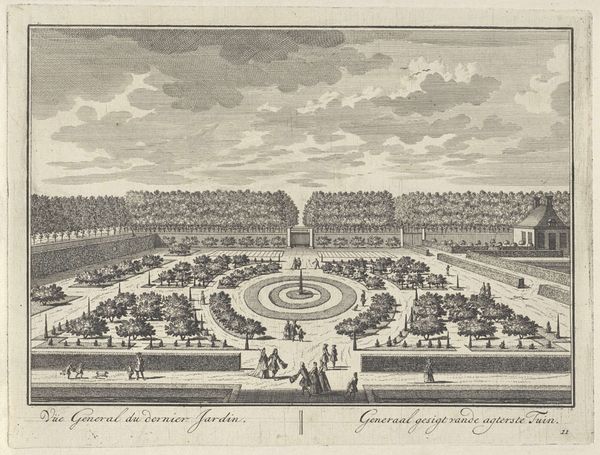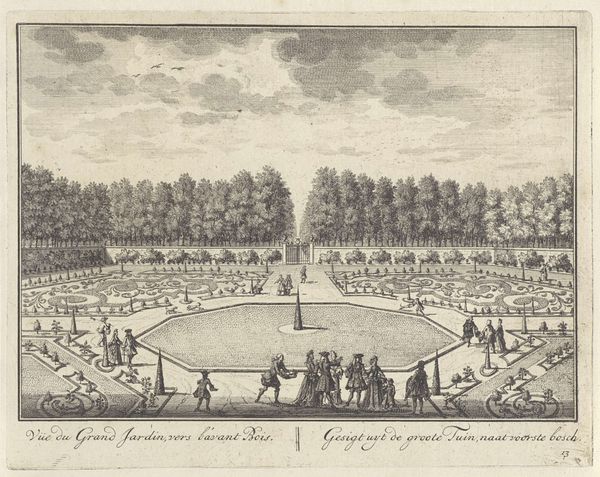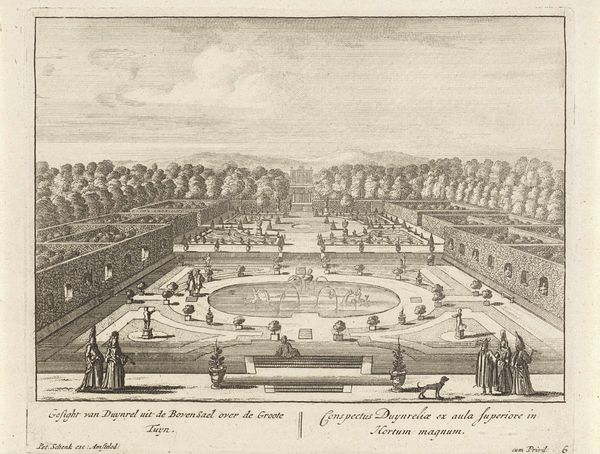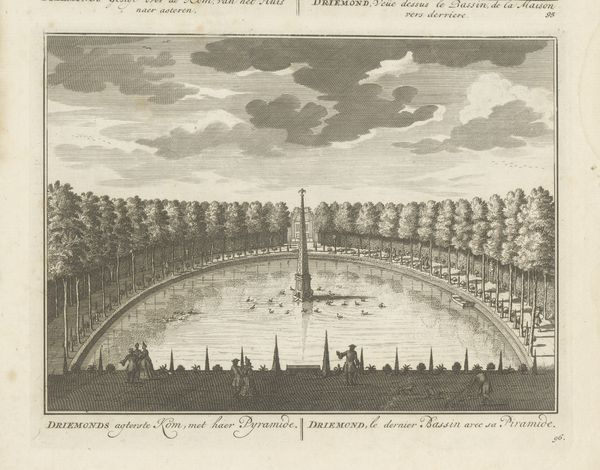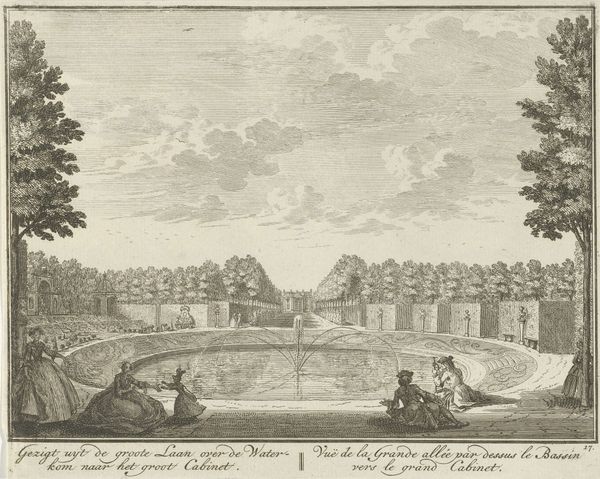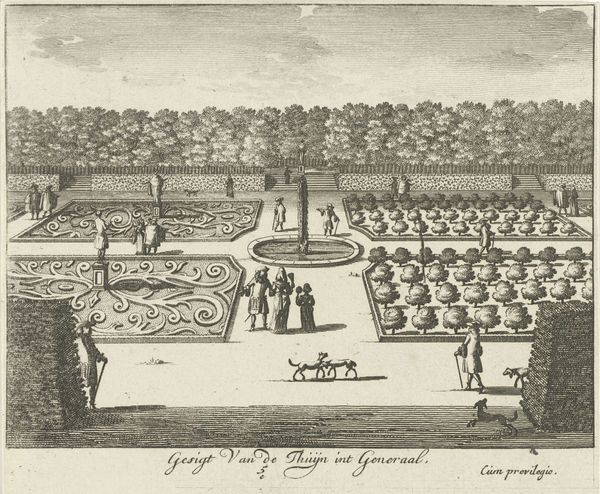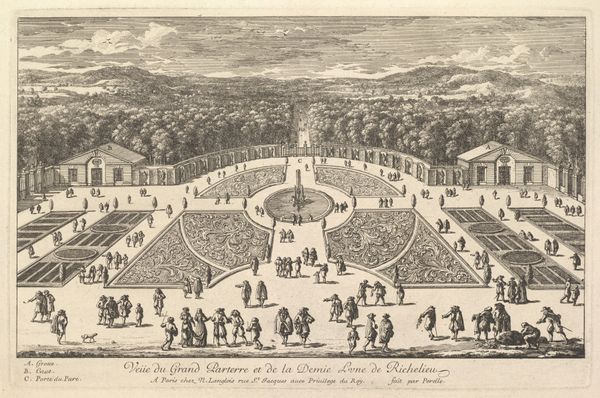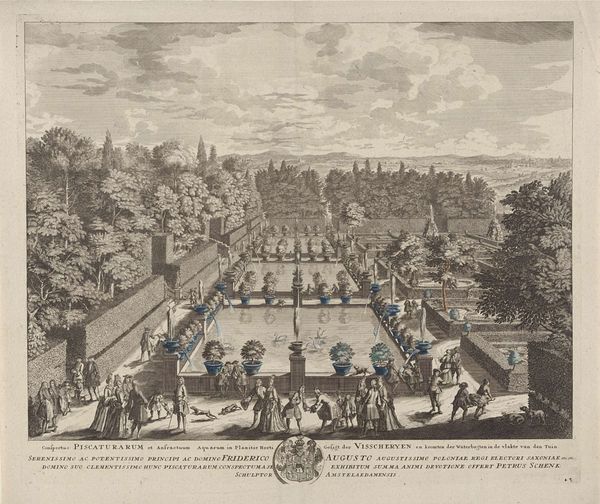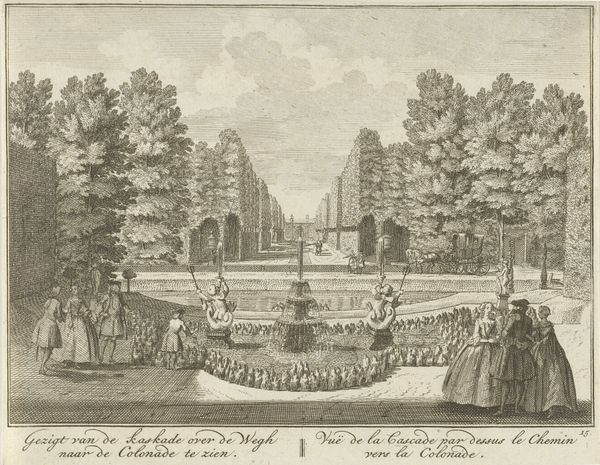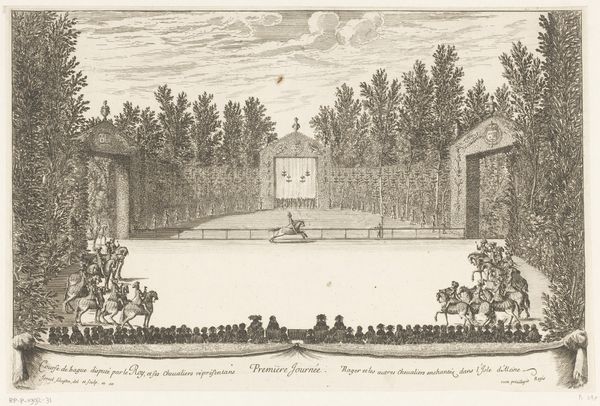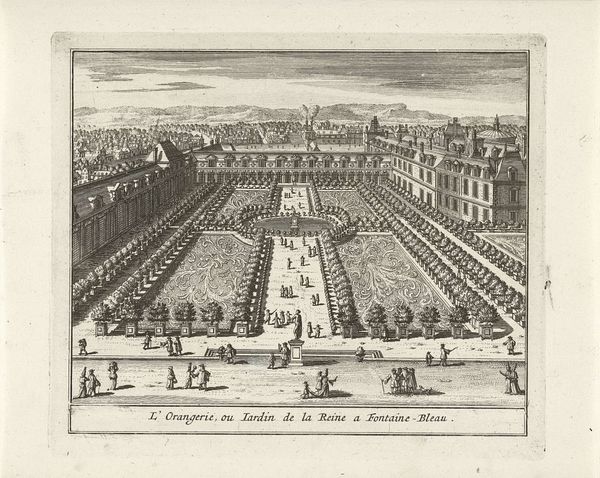
Gezicht op het grasperk in de tuin bij Kasteel Zuilenstein 1682 - 1726
0:00
0:00
print, engraving
#
baroque
# print
#
landscape
#
perspective
#
geometric
#
cityscape
#
genre-painting
#
decorative-art
#
engraving
Dimensions: height 165 mm, width 211 mm
Copyright: Rijks Museum: Open Domain
Curator: This is a print by Daniël Stopendaal, dating from sometime between 1682 and 1726. It’s titled "View of the Lawn in the Garden at Castle Zuilenstein." Editor: It’s fascinating. Very ordered. I see the strong symmetry, the geometric shapes… it evokes a sense of control and imposed design on nature. What’s interesting about representing that dynamic in print form at this time? Curator: Zuilenstein Castle, where the garden was located, was a political and cultural hub during the Dutch Golden Age, tied to the House of Orange. This type of formal garden was often associated with wealth, power, and status, acting as a demonstration of control, not just over nature, but over society, too. It’s interesting how gardens became statements within the visual politics of landscape imagery. Editor: I think about those people strolling in the garden too. It's interesting to reflect on the way that the design dictates social interaction. There are families and gatherings, so is there any subversion here? The print suggests accessibility, potentially challenging the exclusivity of that class. Is the print offering a space for aspirational identity? Curator: The printing and distribution of images like this certainly broadened their audience. Prints played a key role in disseminating ideas about landscape design, aristocratic culture, and even political ideologies. It allowed a growing public to see and almost "experience" spaces they might never physically encounter. The technique of engraving, too, added to the graphic distribution power. Editor: Looking at it from a modern, intersectional lens, the lack of diverse representation in such settings is unavoidable. Gardens like these often came at the expense of exploited labor and resources, yet that is unseen in these images of tranquility. It brings forward a conflict: how do we appreciate the art while acknowledging that uncomfortable history? Curator: Absolutely, and examining these absences and silences in the imagery is crucial. The perspective the artist presents offers a romanticised ideal, and our engagement involves an awareness of this, situating it alongside historical and contemporary ethical understandings of such inequalities. Editor: It prompts us to ask important questions about power, representation, and who gets to define beauty. Curator: Indeed, this glimpse into a past garden serves as a visual reminder of social stratification and artistic intervention, as we continue to discuss art's roles in shaping our environment.
Comments
No comments
Be the first to comment and join the conversation on the ultimate creative platform.
